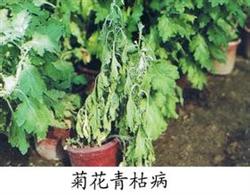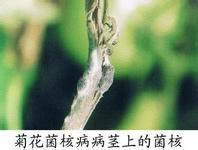Control methods of Fusarium wilt of chrysanthemum

First, the symptoms of damage: at the beginning of the disease, the leaf color became light yellow, wilted and drooping, the base of the stem also became light brown, the vascular bundles of the stem base became brown, and the vascular bundles of the upward expanding branches gradually became light brown, which led to root bark necrosis or blackening and rot, and some stems split at the base. When the humidity is high, white mold is produced, that is, pathogen hyphae and conidia. The spread rate of the disease is slow, and the branches and leaves on one side of some plants turn yellow and wilt or rot. Second, the characteristics of the disease: mainly chlamydospores overwintering in the soil, or saprophytic life for a long time. In the field, it can be propagated mainly by carrying bacteria in soil and taking cuttings from diseased plants or transmitted by irrigation water, or it can also be blown away by wind with the diseased soil. The optimum temperature for the development of the pathogen was 24-28 ℃, the highest was 37 ℃, the lowest was 17 ℃, and the disease was not found when the temperature was below 15 ℃. The fungus only harms the chrysanthemum, and the plant will die when the disease course is 2 weeks under the suitable conditions. Dampness or water stains are easy to occur, especially stagnant water after rain, high temperature and rain, excessive application of nitrogen fertilizer, and acidity in the soil. Third, prevention and control methods: (1) promote the application of Baode biological fertilizer or enzyme bacteria retting compost or mature organic fertilizer. (2) strengthen management, implement crop rotation, select sandy soil suitable for drainage, reasonable irrigation, strengthen the management of planting ditches, and avoid excessive humidity in the field or water accumulation after rain as far as possible. (3) at the initial stage of the disease, 50% carbendazim wettable powder or 50% methyl thiophanate sulfur suspension, 10% Zhiweiling water agent, 12.5% carbendazim concentrated solvent, 50% carbendazim wettable powder, 50% carbendazim wettable powder, 50% carbendazim (chlorobromaisocyanuric acid) water-soluble powder 1000 times.
- Prev

Control methods of bacterial wilt of chrysanthemum
First, the symptoms of damage: the upper leaves of the infected plant wilted for 3-5 days, the bottom leaves turned yellow, the appearance of stem nodes near the ground was brown, the succulent part of the root rotted, the epidermis and fleshy root also turned brown, and then became lead-white. The vascular bundle of the cross-sectional stem turns brown, squeezed by hand or spilled by moisturizing, and the diseased root can also be removed from.
- Next

Control methods of Sclerotinia sclerotiorum in Chrysanthemum
First, the symptoms of damage: waterlogged disease spots appeared in the middle and lower part of the stem at first, and then turned gray; under humid conditions, the disease part was soft rot, superficial white mildew layer, and in the later stage, the cortex of the diseased stem was moldy and fissured, and there were mouse dung-like black sclerotia in the endophy. sometimes sclerotia are also produced on the stem surface. Second, the morphological characteristics of pathogens: the pathogen is ascus.
Related
- Fuxing push coffee new agricultural production and marketing class: lack of small-scale processing plants
- Jujube rice field leisure farm deep ploughing Yilan for five years to create a space for organic food and play
- Nongyu Farm-A trial of organic papaya for brave women with advanced technology
- Four points for attention in the prevention and control of diseases and insect pests of edible fungi
- How to add nutrient solution to Edible Fungi
- Is there any good way to control edible fungus mites?
- Open Inoculation Technology of Edible Fungi
- Is there any clever way to use fertilizer for edible fungus in winter?
- What agents are used to kill the pathogens of edible fungi in the mushroom shed?
- Rapid drying of Edible Fungi

